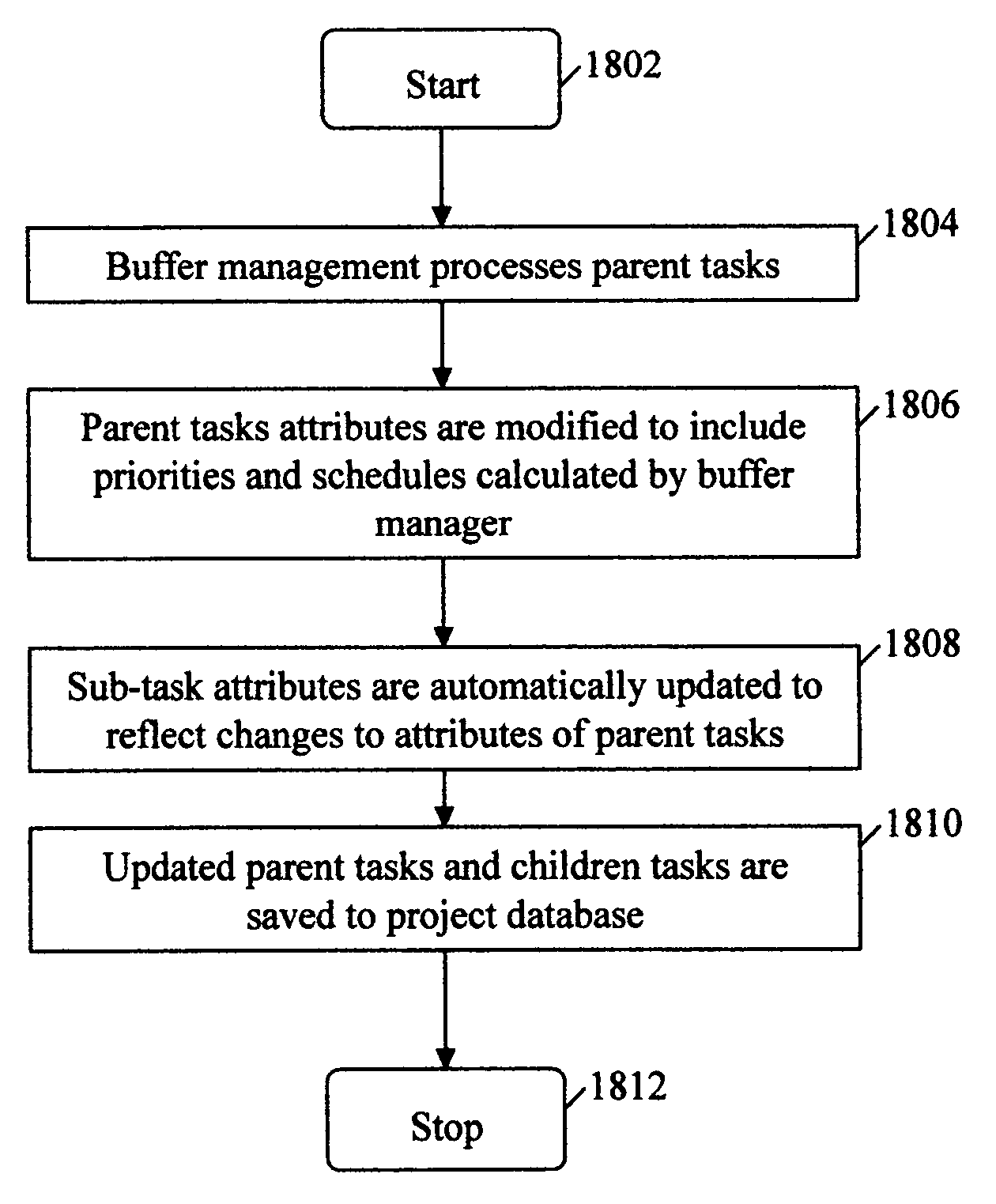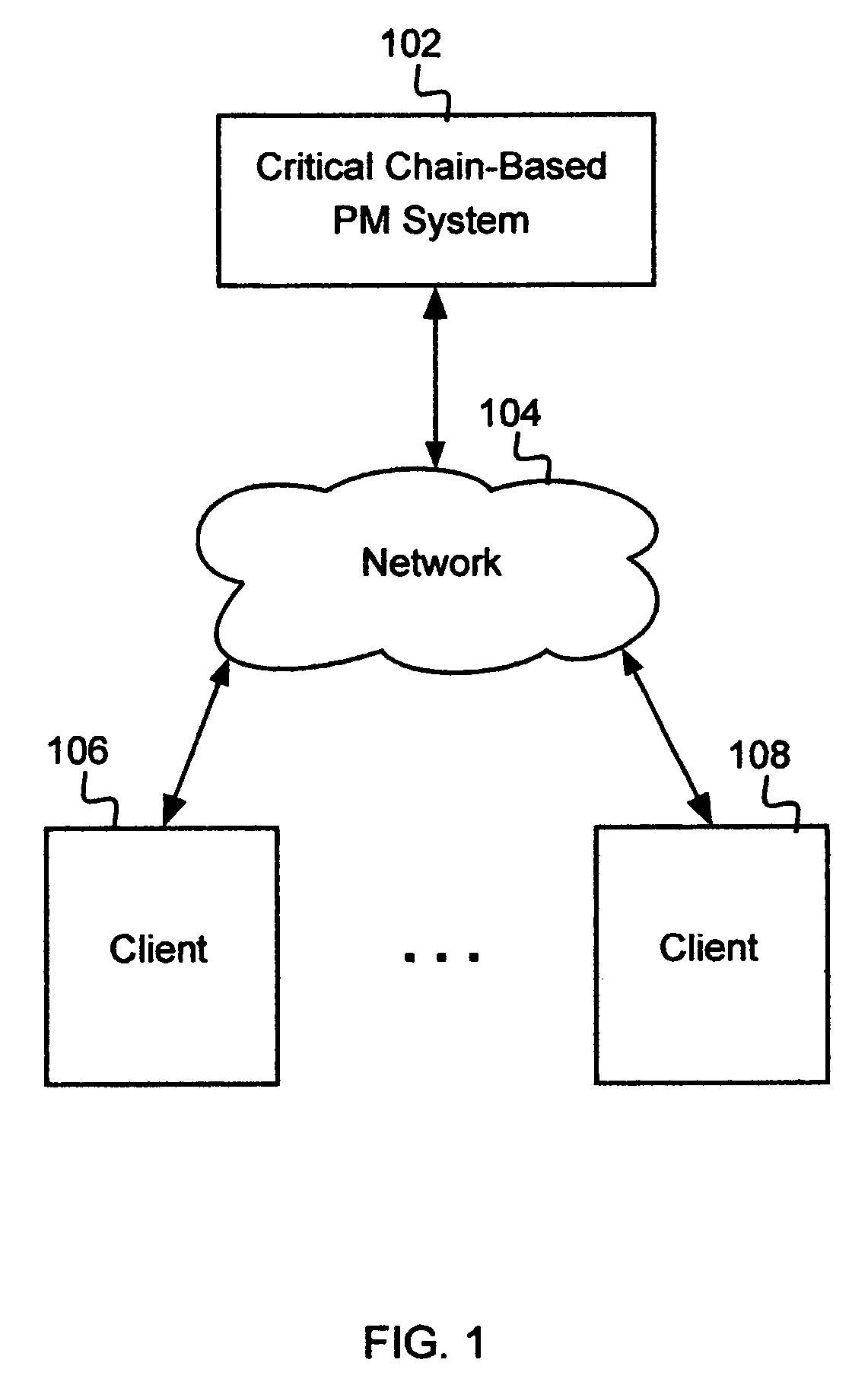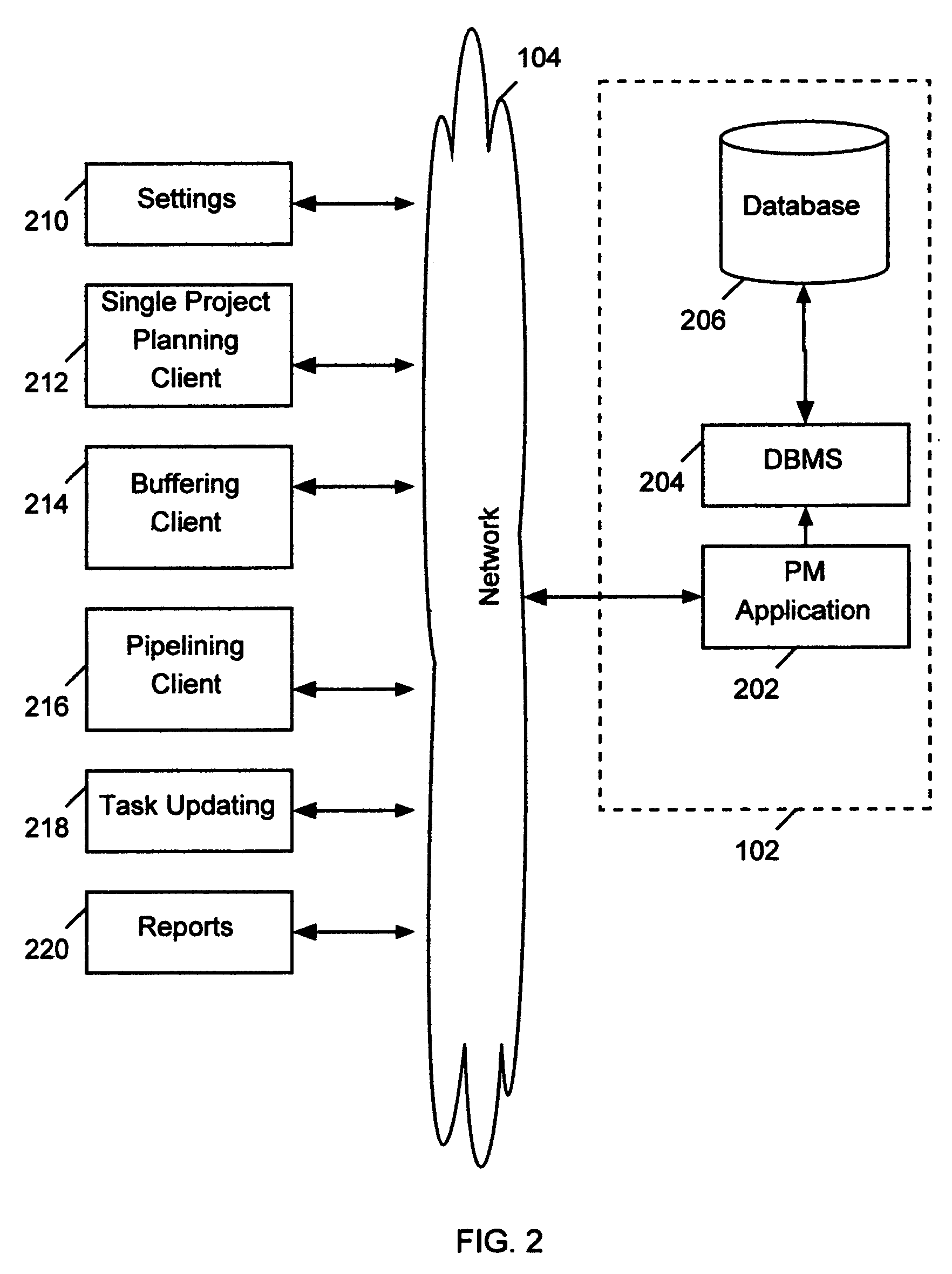Facilitation of multi-project management using task hierarchy
a task hierarchy and multi-project technology, applied in software maintainance/management, program control, instruments, etc., can solve problems such as uncertainty affecting projects, not allowing for the possibility of critical path keeping changing, and most projects, regardless of industry or type, are delivered late, and achieve the effect of efficient and easy-to-implemen
- Summary
- Abstract
- Description
- Claims
- Application Information
AI Technical Summary
Benefits of technology
Problems solved by technology
Method used
Image
Examples
Embodiment Construction
[0044]It should be understood that these embodiments are only examples of the many advantageous uses of the innovative teachings herein. In general, statements made in the specification of the present application do not necessarily limit any of the various claimed inventions. Moreover, some statements may apply to some inventive features but not to others. In general, unless otherwise indicated, singular elements may be in the plural and vice versa with no loss of generality. In the drawing like numerals refer to like parts through several views.
[0045]The present invention, according to a preferred embodiment, overcomes problems with the prior art by providing multi-project buffer management for an efficient and easy-to-implement multi-project management system utilizing the critical chain methodology.
[0046]One advantage of the present invention is the calculation of task priorities while taking a multitude of factors into account, such as buffer priorities, the amount of buffer con...
PUM
 Login to View More
Login to View More Abstract
Description
Claims
Application Information
 Login to View More
Login to View More - R&D
- Intellectual Property
- Life Sciences
- Materials
- Tech Scout
- Unparalleled Data Quality
- Higher Quality Content
- 60% Fewer Hallucinations
Browse by: Latest US Patents, China's latest patents, Technical Efficacy Thesaurus, Application Domain, Technology Topic, Popular Technical Reports.
© 2025 PatSnap. All rights reserved.Legal|Privacy policy|Modern Slavery Act Transparency Statement|Sitemap|About US| Contact US: help@patsnap.com



